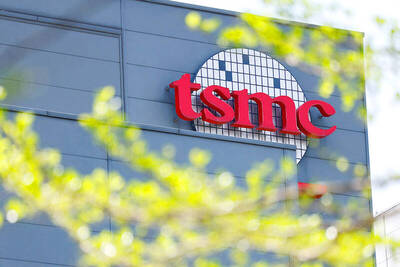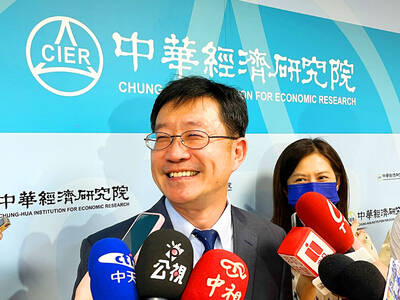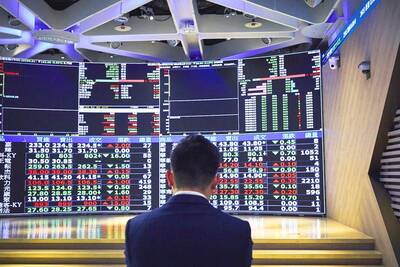There could have been no worse time to hold an expo on the Asian property market this year than this month.
As the impact of the global financial crisis on the region unravels — in the form a slumping stock market, company bankruptcies, steep falls in flat prices, and job cuts — even the most daring of property investors have taken a step back. It was against this backdrop that the Asian version of an international real estate summit held annually in Cannes, France, was held last week in Hong Kong.
The number of exhibitors at the MIPIM Asia conference — developers, banks, architects, hotels and construction firms, mostly from Asia — dropped to 190 from last year’s 236, organizers said.
Visitors were also down to 1,700 from more than 2,100 last year.
During the three days, last Wednesday to last Friday, there were times when the number of people manning the exhibition booths outnumbered visitors.
Despite the lukewarm attendance, however, those who did make it to the expo shared the same enthusiasm for answering the question: Is the Asia market the last bastion of hope for property investment?
“More than ever, we do need this kind of event, our trade delegates really need to communicate in this hard moment,” said Gilles Chaumet, MIPIM Asia director.
As the domestic property markets in the US and Europe are being battered by the credit crunch, many investment groups are starting to preach to their clients about the wisdom of shifting their capital to Asian properties.
“What we will probably see at some stage in early 2009 is that investment committees and fund managers will sit down to look at their asset allocations and say we want to have a certain amount in emerging markets,” said Glenn Maguire, chief Asia economist at Societe Generale in Hong Kong and keynote speaker at the expo.
“I think you will see a reweighting of asset allocation within the emerging market space which is more favorable to Asia, and less favorable to Latin America and Eastern Europe,” he said.
Given that a lot of wealth created over the past decade from the equity market has proved to be worthless, Maguire said, investors will find themselves increasingly attracted to the tangibility of properties.
While Eastern Europe and Latin America both have high exposure to the international banking system, Asia, which is leveraged off China, has generally kept its financial system intact with relatively low borrowing levels, he said.
The resilience of Asian economies under the sub-prime crisis appears to be supported by recent economic data.
An analysis by AME Capital showed that gains made by real estate funds with an Asian mandate dropped to 0.25 percent last year from 33 percent in 2006 — which compares favorably with European and US mandated funds, which posted respective losses of 25 percent and 20 percent last year.
Within Asia, Maguire said he expected economies which have for a long time exported to China, such as Hong Kong, Japan, Taiwan and South Korea, to outperform those which have relied on US consumption, such as Singapore, Malaysia and Thailand.
Despite the downturn, funds targeting Asia have burgeoned in recent months, said Andrew Weir, who looks after property and infrastructure at KPMG China.
Apart from continuing interest from the Middle East, he said, many sovereign funds had maintained high asset allocations to Asian properties “behind the radar screen.”
“The other source of capital coming to the Asian market is what I call ‘unlisted wealth’ — high net-worth individuals in Asia who haven’t been really affected by the stock market situation,” Weir said.
He considered it a “once-in-a-lifetime” opportunity for long-term investment into second-tier Chinese cities such as Chongqing and Wuhan as Beijing recently unveiled economic stimulus packages to boost infrastructure, speed up urbanization and encourage domestic consumption.
“If you have the perspective that China’s long-term demographics and urbanization story is very solid, this is a historic opportunity to get sites in those cities,” he said. “Quite a lot of people think that the next six months is the right time to enter into the market.”

Six Taiwanese companies, including contract chipmaker Taiwan Semiconductor Manufacturing Co. (TSMC), made the 2025 Fortune Global 500 list of the world’s largest firms by revenue. In a report published by New York-based Fortune magazine on Tuesday, Hon Hai Precision Industry Co. (better known as Foxconn) ranked highest among Taiwanese firms, placing 28th with revenue of US$213.69 billion. Up 60 spots from last year, TSMC rose 60 places to reach No. 126 with US$90.16 billion in revenue, followed by Quanta Computer Inc. at 348th, Pegatron Corp. at 461st, CPC Corp., Taiwan at 494th and Wistron Corp. at 496th. According to Fortune, the world’s

NEW PRODUCTS: MediaTek plans to roll out new products this quarter, including a flagship mobile phone chip and a GB10 chip that it is codeveloping with Nvidia Corp MediaTek Inc (聯發科) yesterday projected that revenue this quarter would dip by 7 to 13 percent to between NT$130.1 billion and NT$140 billion (US$4.38 billion and US$4.71 billion), compared with NT$150.37 billion last quarter, which it attributed to subdued front-loading demand and unfavorable foreign exchange rates. The Hsinchu-based chip designer said that the forecast factored in the negative effects of an estimated 6 percent appreciation of the New Taiwan dollar against the greenback. “As some demand has been pulled into the first half of the year and resulted in a different quarterly pattern, we expect the third quarter revenue to decline sequentially,”

WEAKER ACTIVITY: The sharpest deterioration was seen in the electronics and optical components sector, with the production index falling 13.2 points to 44.5 Taiwan’s manufacturing sector last month contracted for a second consecutive month, with the purchasing managers’ index (PMI) slipping to 48, reflecting ongoing caution over trade uncertainties, the Chung-Hua Institution for Economic Research (CIER, 中華經濟研究院) said yesterday. The decline reflects growing caution among companies amid uncertainty surrounding US tariffs, semiconductor duties and automotive import levies, and it is also likely linked to fading front-loading activity, CIER president Lien Hsien-ming (連賢明) said. “Some clients have started shifting orders to Southeast Asian countries where tariff regimes are already clear,” Lien told a news conference. Firms across the supply chain are also lowering stock levels to mitigate

DIVERSIFYING: Taiwanese investors are reassessing their preference for US dollar assets and moving toward Europe amid a global shift away from the greenback Taiwanese investors are reassessing their long-held preference for US-dollar assets, shifting their bets to Europe in the latest move by global investors away from the greenback. Taiwanese funds holding European assets have seen an influx of investments recently, pushing their combined value to NT$13.7 billion (US$461 million) as of the end of last month, the highest since 2019, according to data compiled by Bloomberg. Over the first half of this year, Taiwanese investors have also poured NT$14.1 billion into Europe-focused funds based overseas, bringing total assets up to NT$134.8 billion, according to data from the Securities Investment Trust and Consulting Association (SITCA),